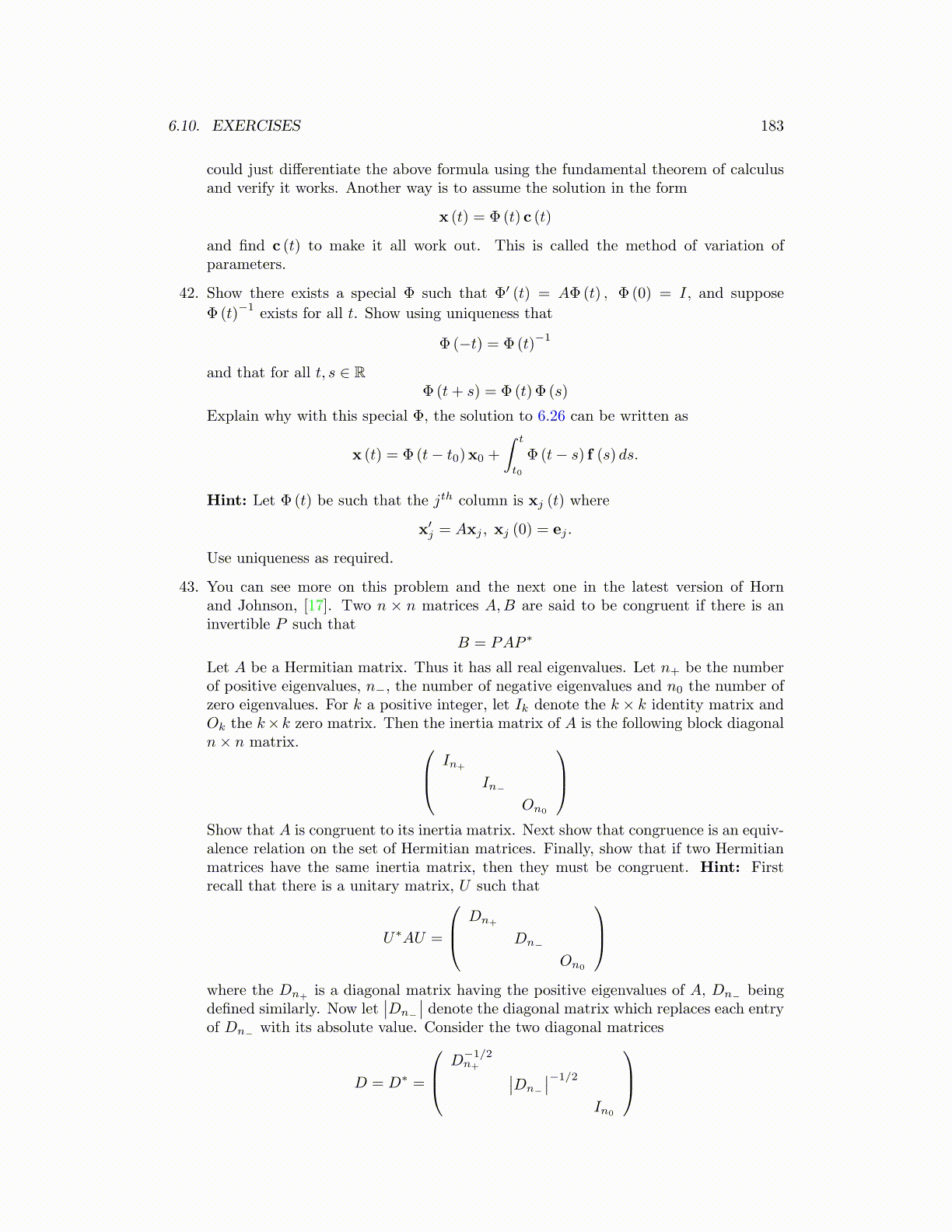
6.10. EXERCISES 183
could just differentiate the above formula using the fundamental theorem of calculusand verify it works. Another way is to assume the solution in the form
x (t) = Φ (t) c (t)
and find c (t) to make it all work out. This is called the method of variation ofparameters.
42. Show there exists a special Φ such that Φ′ (t) = AΦ (t) , Φ (0) = I, and suppose
Φ (t)−1
exists for all t. Show using uniqueness that
Φ (−t) = Φ (t)−1
and that for all t, s ∈ RΦ (t+ s) = Φ (t) Φ (s)
Explain why with this special Φ, the solution to 6.26 can be written as
x (t) = Φ (t− t0)x0 +
∫ t
t0
Φ (t− s) f (s) ds.
Hint: Let Φ (t) be such that the jth column is xj (t) where
x′j = Axj , xj (0) = ej .
Use uniqueness as required.
43. You can see more on this problem and the next one in the latest version of Hornand Johnson, [17]. Two n × n matrices A,B are said to be congruent if there is aninvertible P such that
B = PAP ∗
Let A be a Hermitian matrix. Thus it has all real eigenvalues. Let n+ be the numberof positive eigenvalues, n−, the number of negative eigenvalues and n0 the number ofzero eigenvalues. For k a positive integer, let Ik denote the k × k identity matrix andOk the k×k zero matrix. Then the inertia matrix of A is the following block diagonaln× n matrix. In+
In−
On0
Show that A is congruent to its inertia matrix. Next show that congruence is an equiv-alence relation on the set of Hermitian matrices. Finally, show that if two Hermitianmatrices have the same inertia matrix, then they must be congruent. Hint: Firstrecall that there is a unitary matrix, U such that
U∗AU =
Dn+
Dn−
On0
where the Dn+ is a diagonal matrix having the positive eigenvalues of A, Dn− beingdefined similarly. Now let
∣∣Dn−
∣∣ denote the diagonal matrix which replaces each entryof Dn− with its absolute value. Consider the two diagonal matrices
D = D∗ =
D−1/2n+ ∣∣Dn−
∣∣−1/2
In0